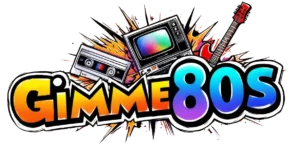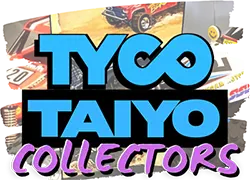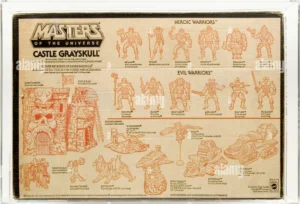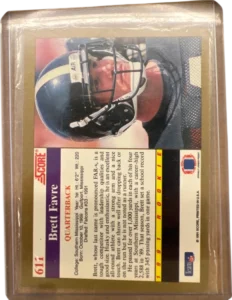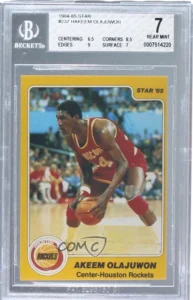1989 NEC TurboGrafx-16 Core Console

NEC TURBOGRAFX-16 Black Console
$235.00
Running this archive is expensive! To help pay these bills, I use the eBay Partner Network, so if you click on an eBay link and buy, I earn a small commission at no cost to you.
VALUE / PRICE HISTORY
Average Price
$190.00
Highest Price
$470.00
| Date | Price | Condition | Type | Title |
|---|---|---|---|---|
| 2025-08-13 | $280 | Used | Buy | NEC TurboGrafx 16 Gaming Console, turbostick, Controller, Game, EDFX AV Adapter |
| 2025-08-12 | $270 | Used | Buy | Genuine OEM TurboGrafx-16 Black System Console & Box With GAME~ TESTED & WORKS! |
| 2025-08-10 | $200 | Used | Buy | NEC TurboGrafx-16 System Black Console with Keith Courage - Tested & Working |
Prices in USD. While all care is taken, there is no guarantee on accuracy of this data.
ITEM REVIEW
The TurboGrafx-16 Core Console was a home video game console that was manufactured by the electronics company NEC and officially released to the public in 1989.

Background
Developed through a collaborative partnership between the well-known electronics company NEC and the software development firm Hudson Soft, the TurboGrafx-16 came into existence from Japan’s PC Engine, which had made its debut there in 1987; the collaboration was specifically aimed at blending Hudson’s extensive expertise in game design with NEC’s advanced hardware engineering capabilities. However, the transition to Western markets involved much more than simply a change of name. The North American model, which arrived in August of 1989, was physically bulkier in design when compared to its Japanese counterpart—reportedly in order to meet the specific regulations set forth by the FCC—featuring a black casing that replaced the compact white design of the PC Engine, a shift that some critics later argued rendered it less visually appealing when placed on store shelves next to its sleeker competitors.
Region-locking further distinguished the TurboGrafx-16 from others, as its HuCard game modules utilized different pin configurations than those found in Japan, a decision that was likely intended to prevent import gaming rather than to enhance overall performance; this fragmentation meant that accessories and software were not cross-compatible, thereby limiting the overall ecosystem that could have developed around it. Marketed as a 16-bit system in order to capitalize on the emerging era of higher-powered consoles, the claim hinged on its 16-bit graphics processors, even though its central processing unit remained at 8-bit, a technical nuance that rival companies such as Sega exploited in various advertising battles.
Features



The TurboGrafx-16’s hardware represented a blend of both older and newer technologies; its 8-bit HuC6280A CPU operated at a clock speed of 7.16 MHz, paired with a 16-bit Video Display Controller (VDC) and Video Color Encoder (VCE), which together enabled a palette of 482 colors and on-screen sprites that significantly outpaced the capabilities of the Nintendo Entertainment System. Games were stored on HuCards, which were credit-card-sized media that reduced bulk when compared to traditional cartridges, although their limited storage capacity—averaging between 2 to 4 megabytes—constrained the complexity of game design until the 1990 release of the TurboGrafx-CD add-on, which expanded storage capacity dramatically to 540 MB via the use of CD-ROMs.
Key specifications included the following:
- An 8-bit central processor with 8 KB of RAM
- 64 KB of video RAM dedicated to handling sprite and background layers
- Sound hardware that supported 6-channel waveform audio
- Resolution output that reached up to 565×242 pixels
The CD attachment, while innovative for its time, required a separate unit that needed to be connected to the console’s expansion port, thereby adding both cost and complexity to the setup process; this peripheral also introduced redbook audio, which was designed for cinematic soundtracks, a feature that was prominently showcased in titles such as “Ys Book I & II,” although its $399 launch price significantly limited early adoption rates.
Popularity and Legacy
In Japan, the PC Engine gained traction remarkably quickly, even outselling Sega’s Mega Drive for a period of time, thanks to a robust library of arcade ports and quirky exclusives such as “Bonk’s Adventure,” which featured a caveman protagonist who headbutted enemies; however, the North American release struggled considerably against both the Sega Genesis and later the Super Nintendo, with NEC’s marketing efforts failing to clearly convey the console’s strengths. By the year 1994, U.S. sales had faltered significantly, leading to the unfortunate discontinuation of the system, although niche followers praised titles such as “Military Madness” and “Blazing Lazers” for their depth and visual polish, games that later came to be regarded as cult classics.
The TurboGrafx-CD’s library, although small in size, included early CD-based experiments such as “Lords of Thunder,” a side-scrolling shooter that featured a heavy metal soundtrack; these titles hinted at the potential of the medium but unfortunately arrived too late to revive the fortunes of the system. The console’s legacy continues to persist among retro enthusiasts, particularly for its significant role in popularizing CD gaming and hybrid hardware approaches. Bonk, meanwhile, became a short-lived mascot, appearing in various spin-offs and crossovers but never truly achieving the same cultural footprint as Mario or Sonic.

Video Reviews and Commercials
The video introduces a hardware review of the Turbo Graphics system. The creator explains that this new review aims to improve upon a previous lengthy review from an old channel. They plan to create a more focused, higher-quality video about the system, potentially splitting the content into separate hardware and game-focused segments.
Availability and Collectability
After its discontinuation in the mid-90s, the TurboGrafx-16 faded from retail shelves, although Japanese PC Engine units remained in production until 1994; regional variants such as the European TurboGrafx—released in limited quantities—now command remarkably high prices among collectors, particularly for sealed games or rare CD titles. Complete-in-box consoles typically sell for prices ranging from $300 to $600, depending on their condition, while sought-after games like “Splatterhouse” or “Castlevania: Rondo of Blood” (which was a Japan-exclusive CD title) can exceed the impressive sum of $1,000 at auction.
The 2020 release of the TurboGrafx-16 Mini—an emulation unit designed for plug-and-play functionality that includes 50 preloaded games—spurred a renewed interest in the system, although original hardware purists critique its accuracy; modifications such as region-free BIOS chips or aftermarket HDMI adapters have become increasingly popular, allowing enthusiasts to bypass the original compatibility restrictions imposed by the console. Despite its commercial struggles, the system’s compact design and hybrid technology continue to attract retro gaming communities, ensuring its place as a curious footnote in the history of the 16-bit era.
Like it? Then you might also like...
DISCUSSION
Information here is to the best of my knowledge at the time of writing, and is frequently updated and improved as I learn more. Contact Me for Feedback or Corrections. Gimme80s.com is not responsible for inaccurate information or commentary, media, or links posted by 3rd parties.
